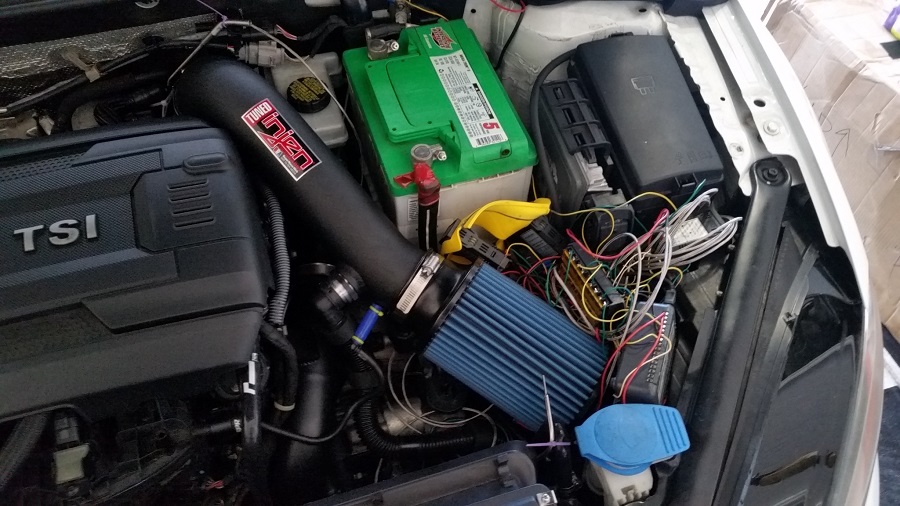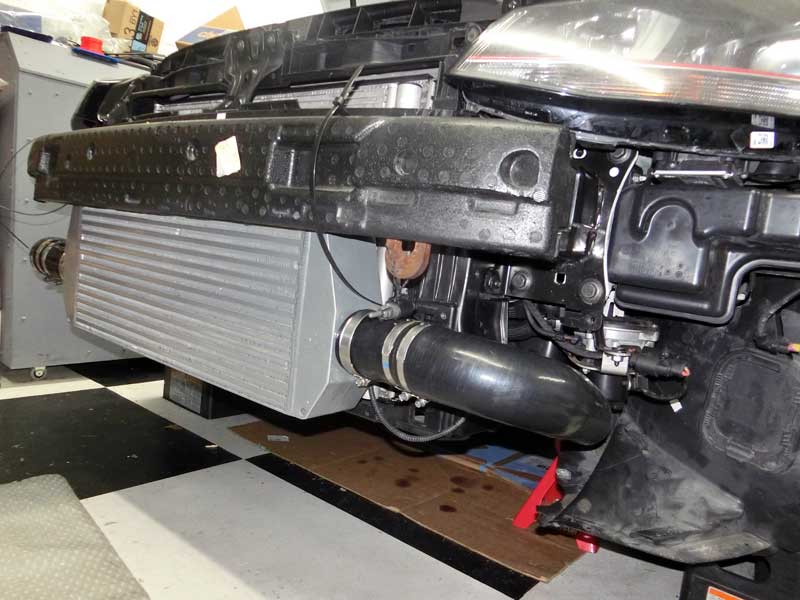Background:
On a few occasions I’ve read statements that the airbox intake air temperatures are not significant because the turbocharger raises the air temperature greatly and then the intercooler performs it’s function of cooling that intake air.
Interested to determine how much of a difference the partition included with the Injen intake makes on the air temperature some data was logged with and without the partition.
In conjunction with the intake partition test the ARM FMIC was hooked up to the stock GTI intercooler to operate as a bicooler in order to evaluate the change in pressure drop across the ICs.
Test Procedure:
Data was recorded continuously during a pair of drives that included several 3rd gear wide-open throttle pulls up to approximately 6500 RPM.
Test Results:
With respect to the pressure drop across the intercoolers the results combining the ARM FMIC with the stock GTI intercooler were as expected, the pressure drop decreased compared to the ARM FMIC alone.
Maximum pressure drop decreased from 4 psi with the ARM FMIC to 1.6 psi with the ARM+Stock bicooler combination.
At the airbox the air temperature changes were also what was expected, removal of the partition led to an increase in the air temperature going into the turbocharger.


During the 3rd gear pull the air temperature versus ambient (OAT) entering the turbocharger doubled with the removal of the partition, increasing from 10 degF to approximately 22 degF.
An interesting result from the test involves the turbocharger wastegate percentage, an indicator of how much work is being required from the turbine to compress the intake air.
The decrease in pressure drop should result in a decrease in the turbine actuator percentage. In this comparison there was also a 12 degF temperature increase in the turbo compressor inlet air, which should result in an increase in turbine actuator percentage.
As the chart above shows, the wastegate percentage is nearly the same in both cases, if anything being slightly higher in the case of the ARM FMIC + Stock GTI IC combined with the Injen intake without the partition.
Conclusion:
A relatively small increase in the air intake temperature to the turbocharger offset the significant decrease (2.4 psi) to the post turbocharger pressure drop, with respect to the turbocharger wastegate percentage.
When trying to optimize the intake system, pressure drops and air temperatures should be considered.





